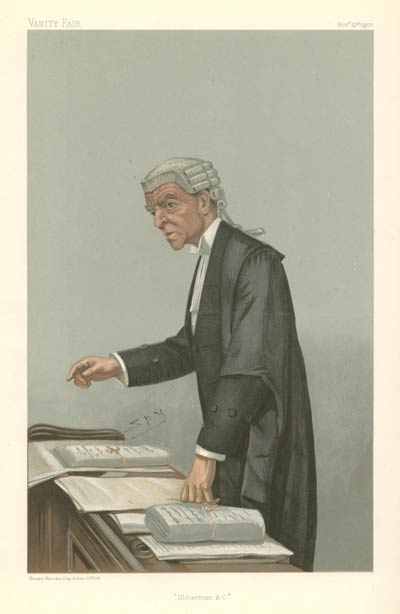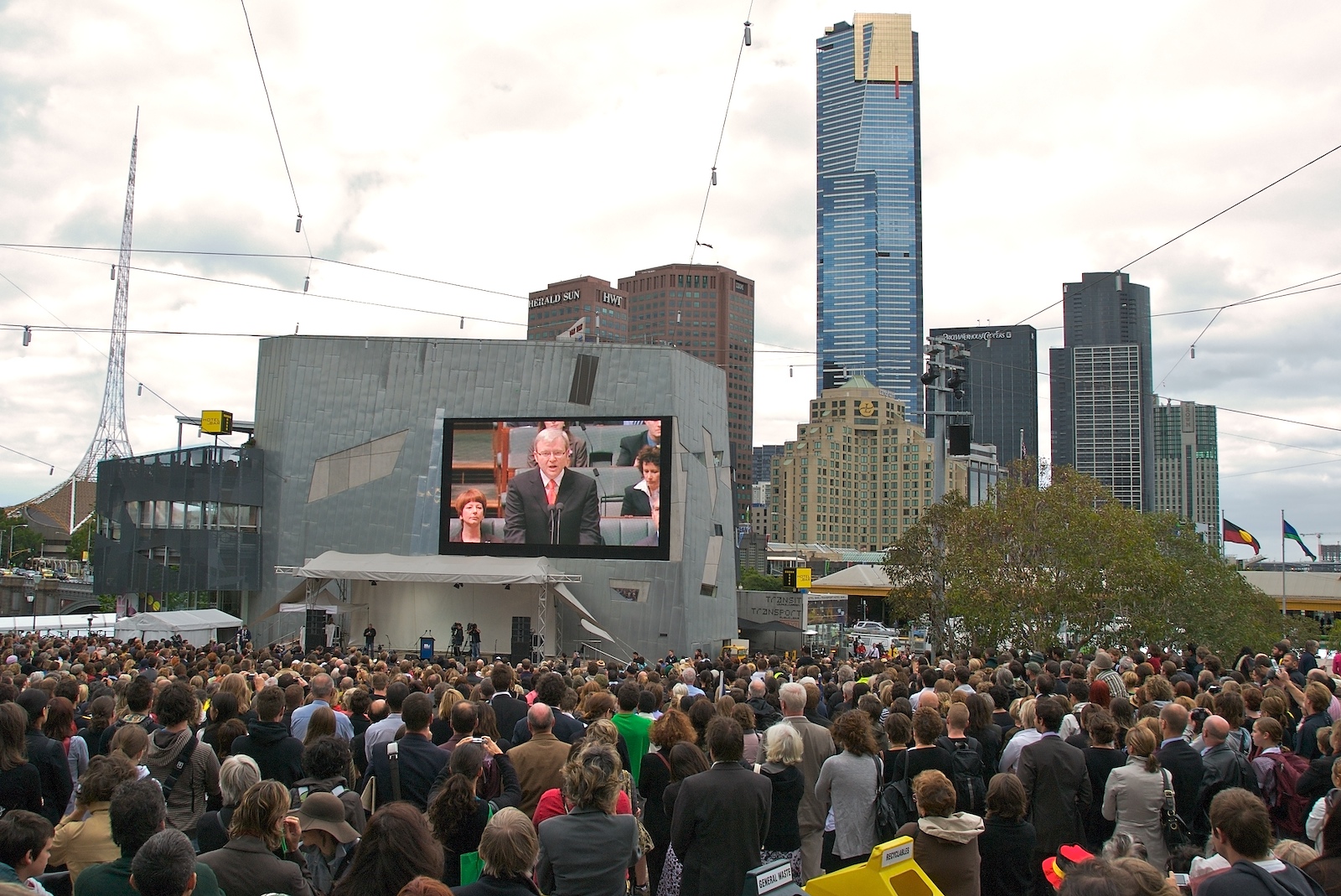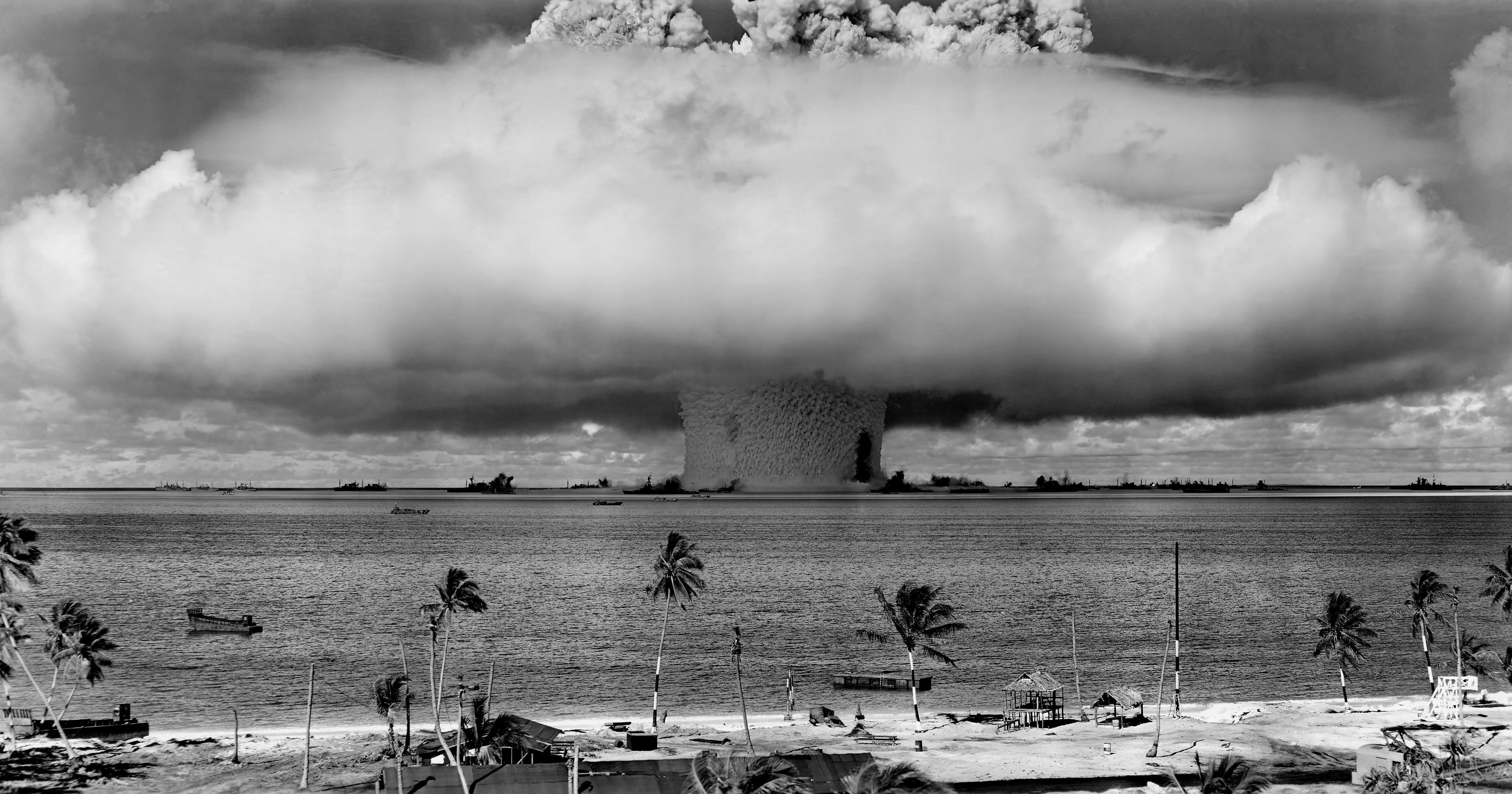|
Ted Mullighan
Edward Picton "Ted" Mullighan, QC (25 March 1939 – 15 September 2011) was an Australian judge who was known as an Indigenous rights advocate and protecting vulnerable people. He was known for his role as Commissioner of the Government of South Australia' Children in State Care Commission of Inquiry (the Mullighan Inquiry) from 2004 to 2008. Early life and education Mullighan was born on 25 March 1939 in a hospital in the seaside suburb of Semaphore in Adelaide, South Australia. Until he got married, he lived on the Lefevre Peninsula, at Semaphore and Largs Bay. His father was an electrician who worked for the Electricity Trust, while his mother became a classical violinist as a teenager, initially playing for the South Australian Symphony Orchestra and then the orchestra run by the Theatre Royal in Hindley Street after having a family and being unable to travel with the larger orchestra. Mullighan attended Largs Bay Primary School and then, from Grade 7, Pulteney Grammar ... [...More Info...] [...Related Items...] OR: [Wikipedia] [Google] [Baidu] |
Queen's Counsel
A King's Counsel (Post-nominal letters, post-nominal initials KC) is a senior lawyer appointed by the monarch (or their Viceroy, viceregal representative) of some Commonwealth realms as a "Counsel learned in the law". When the reigning monarch is a woman, the title is Queen's Counsel (QC). The position originated in England and Wales. Some Commonwealth countries have retained the designation, while others have either abolished the position or renamed it so as to remove monarchical connotations — for example, "Senior Counsel" or "Senior Advocate". Appointment as King's Counsel is an office recognised by courts. Members in the UK have the privilege of sitting within the inner Bar (law), bar of court. As members wear silk gowns of a particular design, appointment as King's Counsel is known informally as ''taking silk'' and KCs are often colloquially called ''silks''. Appointments are made from within the legal profession on the basis of merit and not a particular level of expe ... [...More Info...] [...Related Items...] OR: [Wikipedia] [Google] [Baidu] |
Supreme Court Of South Australia
The Supreme Court of South Australia is the superior court of the Australian state of South Australia. The Supreme Court is the highest South Australian court in the Australian court hierarchy. It has unlimited jurisdiction within the state in civil matters, and hears the most serious criminal matters. The Court is composed of a Chief Justice and as many other justices as may be required. History The Court was established by Letters Patent on 2 January 1837, five days after the colony was founded. The Court is unique among Australia's state supreme courts in that it was established at the foundation of the colony of South Australia, as the notion of a supreme court was a part of the colony's founder, Edward Wakefield's theory of colonisation. Other Australian colonies only established their courts long after the settlement of the colony. The Court was endowed with all the common law and probate jurisdiction of the courts of Westminster. The first sessions of the Court were ... [...More Info...] [...Related Items...] OR: [Wikipedia] [Google] [Baidu] |
Indigenous Australian Customary Law
Indigenous Australian customary law or Indigenous Australian customary lore refers to the legal systems and practices uniquely belonging to Indigenous Australians of Australia, that is, Aboriginal and Torres Strait Islander people. Background and description Indigenous peoples of Australia comprise two groups with very different histories, ethnicities and customs: Aboriginal peoples and Torres Strait Islanders. Torres Strait Islanders are "strictly monogamous ndmostly church-married". The most notable customary practice differing from usual practice among non-Indigenous Australians is that of adoption, known as '' kupai omasker'', by members of the extended family or friends. The reasons differ depending on which of the many Torres Islander cultures the person belongs to. Most studies have looked exclusively at Aboriginal law and lore, with regard to personal and social customs. Aboriginal customary law developed over time from accepted moral and social norms within Indigeno ... [...More Info...] [...Related Items...] OR: [Wikipedia] [Google] [Baidu] |
Aboriginal Australian
Aboriginal Australians are the various indigenous peoples of the Australian mainland and many of its islands, excluding the ethnically distinct people of the Torres Strait Islands. Humans first migrated to Australia 50,000 to 65,000 years ago, and over time formed as many as 500 language-based groups. In the past, Aboriginal people lived over large sections of the continental shelf. They were isolated on many of the smaller offshore islands and Tasmania when the land was inundated at the start of the Holocene inter-glacial period, about 11,700 years ago. Despite this, Aboriginal people maintained extensive networks within the continent and certain groups maintained relationships with Torres Strait Islanders and the Makassar people of modern-day Indonesia. Over the millennia, Aboriginal people developed complex trade networks, inter-cultural relationships, law and religions, which make up some of the oldest, and possibly ''the'' oldest, continuous cultures in the world ... [...More Info...] [...Related Items...] OR: [Wikipedia] [Google] [Baidu] |
Reconciliation SA
Reconciliation Australia is a non-government, not-for-profit foundation established in January 2001 to promote a continuing national focus for reconciliation between Indigenous (i.e. Aboriginal and Torres Strait Islander people) and non-Indigenous Australians. It was established by the Council for Aboriginal Reconciliation, which was established to create a framework for furthering a government policy of reconciliation in Australia. Among other functions, Reconciliation Australia organises National Reconciliation Week each year. The Australian Reconciliation Network comprises reconciliation organisations in the six states of Australia. The organisation has ceased strategic planning as of September 2017. History The Royal Commission into Aboriginal Deaths in Custody, which published its final report in April 1991, had recommended the initiation of a process of reconciliation between Aboriginal and non-Aboriginal Australians. On 2 September 1991, the Australian Parliament vo ... [...More Info...] [...Related Items...] OR: [Wikipedia] [Google] [Baidu] |
Reconciliation In Australia
Reconciliation in Australia is a process which officially began in 1991, focused on the improvement of relations between the Aboriginal and Torres Strait Islander peoples of Australia and the rest of the population. The Council for Aboriginal Reconciliation (CAR), created by the government for a term of ten years, laid the foundations for the process, and created the peak body for implementation of reconciliation as a government policy, Reconciliation Australia, in 2001. Background Guugu Yimithirr and James Cook The first act of reconciliation between Indigenous Australians and non-Indigenous people followed Lieutenant James Cook's 1770 landing at the site of modern Cooktown. Cook and his crew had developed a friendly relationship with the local people, recording more than 130 words of their language. However, after the crew refused to share 12 green turtles which they had caught, thus violating local customs, the locals became angry. A Guugu Yimithirr elder stepped in, pr ... [...More Info...] [...Related Items...] OR: [Wikipedia] [Google] [Baidu] |
Lionel Murphy
Lionel Keith Murphy QC (30 August 1922 – 21 October 1986) was an Australian politician, barrister, and judge. He was a Senator for New South Wales from 1962 to 1975, serving as Attorney-General in the Whitlam government, and then sat on the High Court from 1975 until his death in 1986. Murphy was born in Sydney, and attended Sydney Boys High School before matriculating at the University of Sydney. He initially graduated with a degree in chemistry, but then went on to Sydney Law School and eventually became a barrister. He specialised in labour and industrial law, and took silk in 1960. Murphy was elected to the Senate at the 1961 federal election, as a member of the Labor Party. He became Leader of the Opposition in the Senate in 1967. Following Labor's victory at the 1972 federal election, Gough Whitlam appointed Murphy as Attorney-General and Minister for Customs and Excise. He oversaw a number of reforms, establishing the Family Court of Australia, the Law Ref ... [...More Info...] [...Related Items...] OR: [Wikipedia] [Google] [Baidu] |
Commonwealth Government
The Australian Government, also known as the Commonwealth Government or simply as the federal government, is the national executive government of Australia, a federal parliamentary constitutional monarchy. The executive consists of the prime minister, cabinet ministers and other ministers that currently have the support of a majority of the members of the House of Representatives (the lower house) and also includes the departments and other executive bodies that ministers oversee. The current executive government consists of Anthony Albanese and other ministers of the Australian Labor Party (ALP), in office since the 2022 federal election. The prime minister is the head of the federal government and is a role which exists by constitutional convention, rather than by law. They are appointed to the role by the governor-general (the federal representative of the monarch of Australia). The governor-general normally appoints the parliamentary leader who commands the confiden ... [...More Info...] [...Related Items...] OR: [Wikipedia] [Google] [Baidu] |
Legal Aid
Legal aid is the provision of assistance to people who are unable to afford legal representation and access to the court system. Legal aid is regarded as central in providing access to justice by ensuring equality before the law, the right to counsel and the right to a fair trial. This article describes the development of legal aid and its principles, primarily as known in Europe, the Commonwealth of Nations and in the United States. Legal aid is essential to guaranteeing equal access to justice for all, as provided for by Article 6.3 of the European Convention on Human Rights regarding criminal law cases and Article 6.1 of the same Convention both for civil and criminal cases. Especially for citizens who do not have sufficient financial means, the provision of legal aid to clients by governments increases the likelihood, within court proceedings, of being assisted by legal professionals for free or at a lower cost, or of receiving financial aid. A number of delivery mod ... [...More Info...] [...Related Items...] OR: [Wikipedia] [Google] [Baidu] |
The Advertiser (Adelaide)
''The Advertiser'' is a daily Tabloid (newspaper format), tabloid format newspaper based in the city of Adelaide, South Australia. First published as a broadsheet named ''The South Australian Advertiser'' on 12 July 1858,''The South Australian Advertiser'', published 1858–1889 , National Library of Australia, digital newspaper library. it is currently a tabloid printed from Monday to Saturday. ''The Advertiser'' came under the ownership of Keith Murdoch in the 1950s, and the full ownership of Rupert Murdoch in 1987. It is a publication of Advertiser Newspapers Pty Ltd (ADV), a subsidiary of News Corp Australia, itself a subsidiary of News Corp. Through much of the 20th century, ''The Advertiser'' was Adelaide's morning broadsheet, ''The News (Adelaide), The News'' the afternoon tabloid, wi ... [...More Info...] [...Related Items...] OR: [Wikipedia] [Google] [Baidu] |
Ash Wednesday Bushfires
The Ash Wednesday bushfires, known in South Australia as Ash Wednesday II, were a Bushfires in Australia, series of bushfires that occurred in south-eastern Australia in 1983 on 16 February. Within twelve hours, more than 180 bushfires, fires fanned by hot winds of up to caused widespread destruction across the states of Victoria (Australia), Victoria and South Australia. Years of 1979-1983 Eastern Australian drought, severe drought and extreme weather combined to create one of Australia's worst fire days in a century. The fires were the deadliest in Australian history until the Black Saturday bushfires in 2009. 75 people died as a result of the fires; 47 in Victoria, and 28 in South Australia. This included 14 Country Fire Authority and three Country Fire Service personnel, all 17 were volunteer firefighters. Many fatalities were as a result of firestorm conditions caused by a sudden and violent wind change in the evening which rapidly changed the direction and size of the fir ... [...More Info...] [...Related Items...] OR: [Wikipedia] [Google] [Baidu] |




